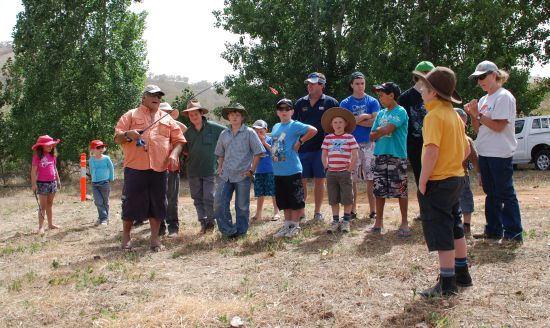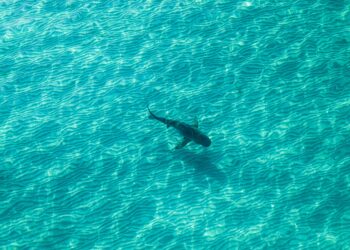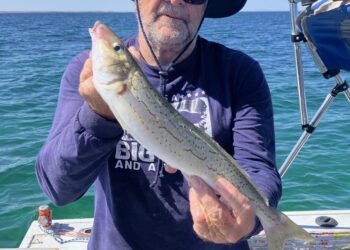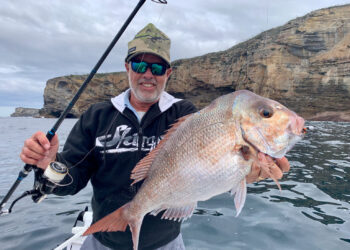CYPRINUS carpio or as it is more commonly known, the European carp, is one of the world’s most common freshwater fish. It is extensively farmed in Europe, Asia and the Middle East for food. Carp were introduced to China, Japan and Italy in ancient times and from Rome spread to Greece and southern Europe. They arrived in central Europe in the 12th century and England in the 14th century.
While a popular angling species in Europe, in Australia the carp is considered a pest by most anglers.
The exact date of the carp’s initial introduction to Australia is unclear. Some records claim the species was introduced to waters near Sydney as early as the 1850s. Others claim the first introduction was to Victoria in the 1870s. The earliest documented report was from David Stead who purchased carp from a “bird and animal dealer “in Sydney and introduced them into Prospect Reservoir in 1907 and 1908. They became known as the “Prospect strain”.
During the 1940s and 1950s there were reports of carp in the irrigation channels of the Murrumbidgee Irrigation Area.These were different from the Prospect fish in that they were orange in colour and became known as the “Yanco” strain. In 1961 or 1962, a fish farmer in south-eastern Victoria introduced a carp to his ponds at Boolara.
So why was it that we only witnessed a dramatic increase in the carp’s range in the 1970s when they had been present for many years in Australia?
Genetic research has shown the fourtypes of carp; the Prospect, Yanco, Koi (Japanese for carp) and Boolarra strains, behave differently. The Boolarra strain was probably imported from Europe where it had been developed specifically for fish farming and only the Boolarra and Koi strains could colonise and rapidly adapt to our environment. And as they say, the rest is history!
Love them or hate them carp are a victim of circumstance. In my opinion it’s a shame they are here in Australia turning the clear flowing rivers of my childhood into muddy, soupy streams that sometimes fail to clear over a summer. A lot of kids have grown up with carp in rivers and impoundments and don’t have memories of clear flowing waters healthy with native fish.
Carp law
Somewhat surprisingly, some anglers advocate the release of carp after capture while others have been known to illegally translocate these fish to help their distribution.
In NSW, carp are currently listed as a Class 3 noxious species under the Fisheries Management Act 1994. This permits their sale and possession and the listing recognises the fact that wild carp are a commercially fished species; koi carp are an important ornamental fish in NSW.
Currently it is not illegal for recreational fishers to return carp to the water where they were captured, however, Industry and Investment NSW strongly encourages fishers to retain and utilise them. Under the NSW Fisheries Management Act 1994 it is illegal to introduce any live fish into any public waterway without a permit (with the exception of immediate re-release of fish at the site they were captured).
Carping events – making a difference?
Carp Outs, Carp Culls, Carp Kills, Carp Musters etc. – such events are rapidly gaining in popularity. One of the benefits of these popular family attended events is that they introduce kids to fishing. They are also shown that the carp is an undesirable species that should be removed from rivers and lakes in the short term.
Families at a Carp Bash will mostly be armed with a rod and reel and bait such as worms, corn and dough made with secret recopies containing special ingredients such as garlic oil, vanilla essence, curry powder or just plain bread; the basic rig would see a hook with a running sinker onto the hook – a variant would be a sinker with a swivel or matchstick about 600mm above the hook.

Do these events achieve much in reducing carp numbers?

In the overall scheme of things probably not, as a female carp can produce between 80,000 and 1,500,000 eggs depending on the size of fish, so if all but a few are missed they can rapidly repopulate a waterway. On the other side of the coin a large female caught and disposed of, theoretically, will have prevented a possible 1,500,000 eggs being spawned into the waterway. To extrapolate these figures for example, a thousand breeding females removed from a waterway has the potential to remove in excess of one billion eggs from that water.
In NSW, Industry & Investment Fisheries Education Officers, Fishcare volunteers and noted angling identities combine to help families at carp catch events. As well as educating and assisting attendees about all facets of carp and native fish species attendees are shown how to set up of the tackle used to catch fish on the day, as well as given knot tying and casting demonstrations.
Many carp based fishing days are now well supported by tackle companies and their associated affiliates – in NSW the Bathurst BCF Carp Blitz is set down for November 6 this year on the Macquarie River and Sofala Carp Challenge for November 20.

Peter Byrom with a solid carp taken on fly gear.
Carp the fighter
While carp are despised by many, they are great fighters on the end of a line. They have proven to be a worthy adversary on bait, lure and fly. My personal carp fishing preference involves sight fishing in shallow waters. A fly rod and a few nymphs or my favorite fly, a bead head woolly bugger, and you’re set for a day that will test your rod and leader to the limit. Your backing too will at times see daylight. The carp is an excellent sportfish and because of this has been known to be referred to as the “golden bone”!
Finally, love ’em or hate ’em, carp should be dispatched quickly and humanely. Do not leave caught fish scattered along river banks or shorelines to rot. If you have no use for carp, simply cut them up and return them to the water for the shrimp and yabbies to feed on!

Well known fishing identity and writer Rod Harrison regularly appears at carp fishing events teaching kids casting and fishing skills.

Here Rod puts the finishing touches to a fly-caught “golden bone”.
For more information on carp: http://www.dpi.nsw.gov.au/fisheries/pests-diseases/freshwater-pests/species/carp





















